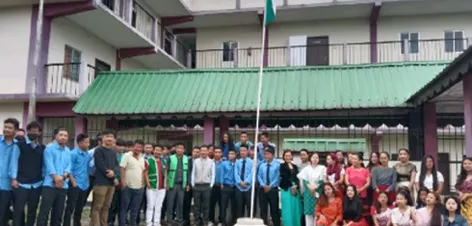ZIRO, 29 Aug: There are over 200 million skilled workers in China, among whom 50 million are highly-skilled workers, according to China’s ministry of human resources & social security (MHRSS), while in India skilled workforce accounts for merely one in five Indians.
According to a 2018 report by the NCAER, India had about 468 million people in its workforce, of whom around 92 percent were in the informal sector, around 31 percent were illiterates, 13 percent had primary education and only 6 percent were college graduates. Further, only 2 percent of the workforce had formal vocational training.
The report had also estimated that almost 1.25 million new workers (aged 15-19 years) were projected to join India’s workforce by 2022.
On the other side, the total labour force in Arunachal Pradesh is 35.25 percent, which is about 5.19 lakhs out of the total population of 17,48,873 in 2021. In the workforce 47.4 percent are females, 52.6 percent are males and 6.7 percent are unemployed in comparison to 4.85 percent unemployment rate of India.
Approximately 47 percent of the unemployed youths have completed their graduation or above and are still unable to find jobs while those with higher secondary school certificates remain at 19 percent.
Toeing the Centre’s effort to bridge the skill gap between India and China, Arunachal Pradesh has also come up with several industrial training institutes (ITI) to provide vocational training to the youths and make them skilled in their fields of interest. Currently, seven it is, with a seating capacity of 2,124, are in Sagalee, Ziro, Tabarijo, Roing, Yupia and Dirang. Three more are coming up in Lumla, Kanubari and Pangin.
Located in the idyllic and serene Manipolyang, on the outskirt of Hapoli township, the ITI Ziro started its maiden academic session from August this year.
Spread over an area of 4 acres in Manipolyang in Hong village, the maiden vocational training institute of the district has five trades – electrician, wireman, surveyor, basic cosmetology and motor mechanic vehicle. The duration of the course varies from 1 to 2 years, depending on the trade.
Started in 2017, the institute was completed in a record time of two years, in 2019, with office-cum-administrative building, a 60-bedded boys’ hostel, a 40-bedded girls’ hostel, and quarters for the warden and the principal.
Of the 100 trainee intake capacity, 82 have been filled up so far from various parts of the state.
A female electrician trainee, Opet Lego, from Dambuk, Lower Dibang Valley district, says she wants to break the jinx of “stereotype male dominated jobs like electrician and wireman” and intends to get training from the ITI and work in a reputed private company.
Surveyor trainee Kaling Nitik, from Tuting, Upper Siang district, says he wants to join diploma in surveyor after completion of the ITI course and work in a reputed private company. Tadu Muni from Ziro, a trainee in basic cosmetology, said that private institutes charge heavy fees of Rs 60,000 and above, and that is why she joined the ITI, which offers free training.
After completion of the course, she intends to open her own beauty salon and wants to be the most popular makeup artist in town.
Karba Ete, a trainee in motor mechanic vehicle, from Aalo, said that he has been passionate about motor vehicles since his childhood and that is why he enrolled himself in the ITI to gain complete knowledge about motor vehicles and work at some factory or open a garage of his own to fulfil his dream.
Nyade Tamin, a wireman trainee from Daporijo, informed that his parents are financially not sound, so he could not pursue his higher education and had to enroll himself in the ITI. He intends to graduate from the ITI and work in a private company to support himself and his parents.
All said and done, may the educated unemployed youths of Arunachal enrolled in government sponsored it is toil, train and skill themselves and earn their bread and butter decently and respectfully. (The writer is DIPRO, Lower Subansiri)




